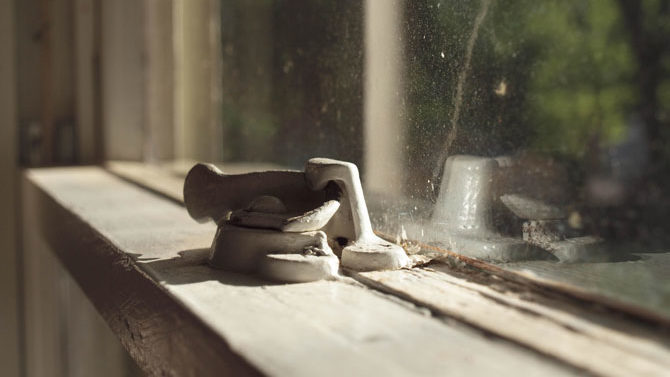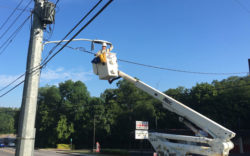You may be surprised to learn that I live in a 100-year-old house with original single-pane windows and almost no insulation. Energy retrofits in old houses can be confusing and expensive, and it’s easy to develop analysis paralysis trying to figure out where to start. Old houses have finicky materials to work around and sometimes historic preservation concerns to boot.
The cheapest thing that you can do yourself is tighten up points of air infiltration. Doors may have weird gaps due to warping, so V-strip (flexible plastic folded in a V shape) tends to work well there. A door sweep on the bottom will stop toe-chilling drafts. The locks on double-hung sash windows should engage to squeeze the sashes together and compress the top and bottom into the frame, but if they don’t lock, you may need to get rid of excess paint buildup. Unused fireplaces need an inflatable draft-stopper to seal the flue without violating fire codes. If you’re comfortable working around wiring, you should caulk the gaps and holes in and around junction boxes in your ceiling. Attic hatches are easy to tighten up with a foam gasket.
People talk about replacing their old windows to save energy, but if your windows are in good shape, keep them and have them repaired as needed. (The Athens-Clarke Heritage Foundation can provide resources.) They’ve lasted nearly a century, are made of durable but now unobtainable materials and, if taken care of, will outlive you. A tune-up for historic windows can get expensive, but it’s not nearly as costly as replacement. If you must replace irreparable old windows, then invest in quality double-pane glazing, but if your only reason is energy savings, you will never see a return on investment.
If you have an HVAC in your attic, the best practice is to insulate the roof and gable walls to enclose the system in a semi-conditioned space. (Joseph Lstiburek is the leading authority on this subject, and much of his work is available for free online.) You may consider this even if you only use the attic for storage. In our climate zone, you can apply insulation directly to the underside of the roof deck only if you have an inch of rigid foam insulation on the outside of the sheathing. This prevents condensation from forming in the roof structure in cold weather and rotting it out. Otherwise, there must be a vented air channel between the insulation and the underside of the roof, with openings at the eave and the ridge. If there’s nothing in the attic, a blanket of 13 or 14 inches of blown cellulose on the attic floor will get you up to code for not a lot of money. Either way, get rid of that attic ventilation fan—it’s not helping.
Insulating old walls is tricky, because you have plaster and lath on the inside, historic siding on the outside and sometimes asbestos siding over that. Your best choice is to have cellulose blown in, but make sure someone does an infrared survey afterward to ensure diagonal braces or fire blocks between studs didn’t create voids. Injecting spray foam is another option, but there are enough concerns about trapped moisture, shrinkage and irreversibility to give one pause.
Most of us have crawlspaces, and most of them are either totally open or at least ventilated. If your HVAC is down below, then there is a strong case for encapsulating the crawlspace to make it semi-conditioned. This requires good stormwater management around the house, moisture control under the house and proper selection and application of insulation material on the crawlspace walls. If you insulate the floor instead, care should be taken to protect plumbing from freezing; you don’t want to isolate it from the warmth of the house in winter.
All this stuff can get expensive, so it’s important to be aware of how much you spend on heating and cooling, because sometimes the payback just isn’t there. In other words, you may not want to spend $20,000 to reduce your heating and cooling 25–50 percent if you only spend $1,500 a year to start with. I’ll explain how to figure that out in a future column.
Got a question for the Greensplainer? Email news@flagpole.com.
Like what you just read? Support Flagpole by making a donation today. Every dollar you give helps fund our ongoing mission to provide Athens with quality, independent journalism.










